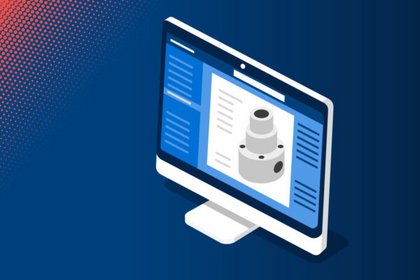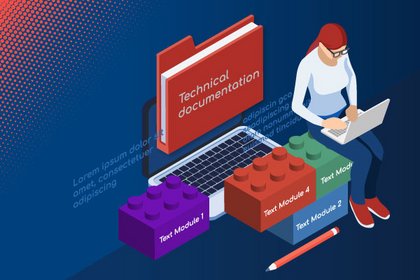Plain Language in Technical Writing
Standards for plain language have been in the works in Germany and at the international level since 2019. Dr. Markus Nickl, CEO at Quanos partner doctima, heads up efforts to establish related standards at DIN. In our podcast, he revealed how the new standards will change technical writing and the ways they can be used in the future.

Will plain language change everything?
Plain language is a style of writing designed to ensure that as many people as possible can understand informative texts intended for them. Annetta Cheek summed this up back in 2010 with a definition describing the main elements of plain language: “A communication is in plain language if it meets the ends of the audience – by using language, structure, and design so clearly that the audience has the best possible chance of readily finding what they need, understanding it, using it.”
In other words, the main elements of plain language are the target group, communication goals, comprehensibility, findability, and usability. These same requirements are likewise relevant to technical documentation.
Unlike easy language, however, plain language does not change generally accepted linguistic standards. While easy language is primarily aimed at people with cognitive impairments, plain language is for everyone as a matter of principle. This also makes it suitable for technical documentation, in addition to other sectors and writing tasks such as official communications or drafting end user agreements.
Will it be possible to use plain language soon?
So far, the use of plain language in Germany has been addressed in two standards and standard specifications. International standard DIN ISO 24495-1 sets out general principles for plain language: findability and relevance of the content, requirements for comprehensibility, and the aspect of usability first and foremost. This also includes, for example, an analysis of the target group and monitoring the document throughout its entire period of use. DIN ISO 24495-1 is supplemented by a German standard that governs language-dependent aspects, which primarily comprise linguistic characteristics that influence comprehensibility and findability in German.
Both standards have now reached an advanced stage, and international standard ISO 24495-1 has already been published and is ready for use. This standard is currently being translated so it can be transferred to Germany as DIN ISO 24495-1 and is set to be published in early 2024. The language standard for German is likewise in the final phase of publication. Following a phase in which the public was invited to comment and revisions were made on this basis, DIN 8581-1 is now in the final review phase and is expected to be published at the start of the second quarter of 2024.
Plain language—in technical writing?
Plain language—in technical writing? But what do the standards for plain language have to offer for technical writing? Will this create another language standard that also needs to be considered and, in the worst case, goes against existing standards and style guides in the field of technical writing?
Actually, the opposite is true. Those who are already familiar with existing language standards in technical writing will recognize many parts of both standards. So in terms of content, there will be relatively few new things for technical writers to learn.
At the same time, the two standards are a win from the perspective of technical writing, because they transfer the standards of linguistic quality that we follow to a wider target group. For example, they can be referred to as a standard for digitalization because they set out documentation-compatible rules that other departments can agree on.
There will also be advantages in terms of recruitment if linguistic rules like those used in technical writing now also become commonplace in other sectors such as journalism. This is because the rules make it easier for people working in other areas to change careers to technical writing.
And last but not least, the standard is an image factor, because it makes it possible to demonstrate the high quality of a company's technical documentation based on a broadly applicable standard. So thanks to the standards for plain language, the field of technical writing is gaining a tool that can be used effectively on many levels without the headache that comes with having to switch to new rules.


